Abstract
1. Rats were treated for 4 weeks with liquid diets that contained, on the basis of energy content, 35% fat, 18% protein and 47% carbohydrate (high-fat diet) or 35% fat, 18% protein, 11% carbohydrate and 36% ethanol (high-fat/ethanol diet). 2. The livers were perfused with 1mm-[1-14C]palmitate and with 0, 10mm- or 80mm-ethanol. The oxidation and esterification of palmitate was measured. Two subcellular pools of triacylglycerol were separated; one contained triacylglycerol from cytoplasmic lipid droplets and the other contained triacylglycerol from the endoplasmic reticulum and Golgi apparatus. 3. In the presence of ethanol, liver from rats fed on the high-fat diet esterified about 70% of the [1-14C]palmitate taken up compared with 90% in liver from rats fed chow (containing 11% fat on the basis of energy content). Compared with chow diet the high-fat diet did not potentiate the effect of ethanol on storage of [1-14C]palmitate in hepatic triacylglycerol. The relation between the fat content of the diet and the degree of fatty liver induced by by ethanol [Lieber & DeCarli (1970) Am. J. Clin. Nutr. 23, 474–478] is discussed. 4. The ethanol-containing diet increased the hepatic content of triacylglycerol 4-fold and the increase was exclusively found in the fraction suggested to contain lipid from cytoplasmic lipid droplets. The ethanol-induced fatty liver, perfused with ethanol, esterified and oxidized palmitate at rates that were quite similar to the rates found in high-fat control livers perfused without ethanol. This suggests that the fatty liver had adapted to the presence of ethanol with respect to palmitate metabolism. 5. O2 and ethanol uptake by the livers were not affected by the ethanol-containing diet.
Full text
PDF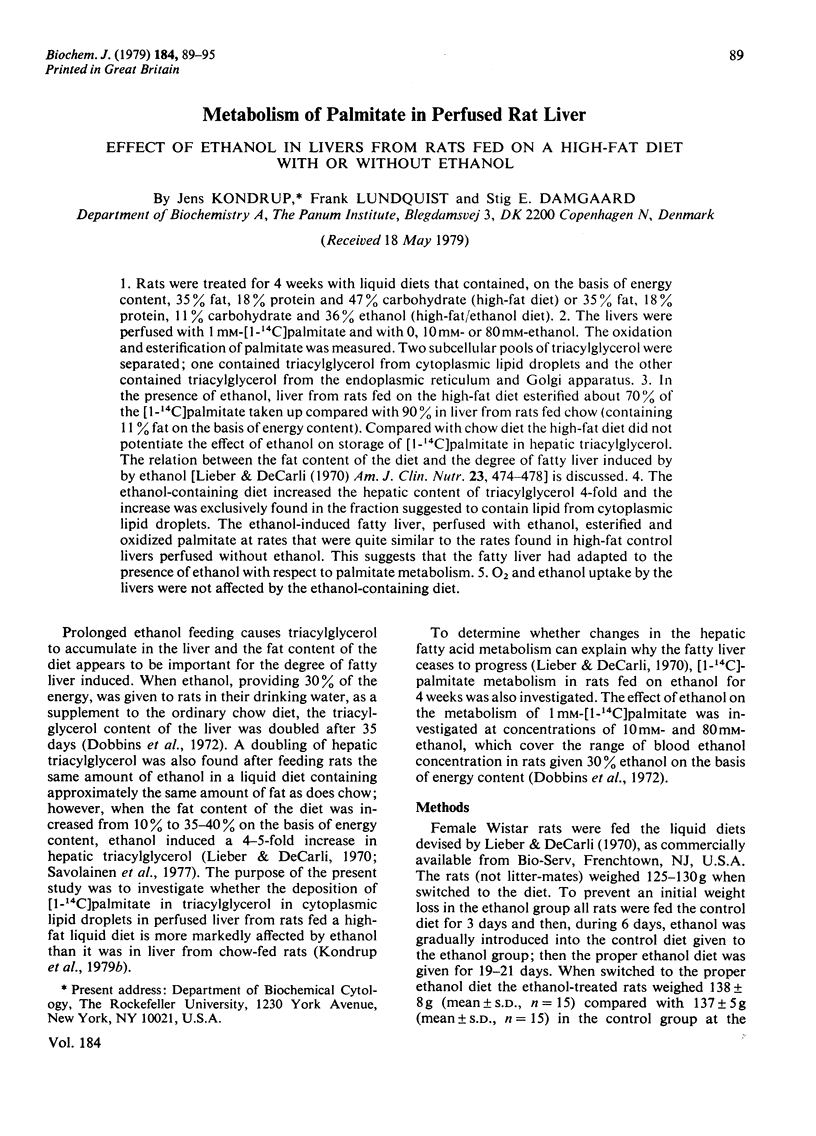
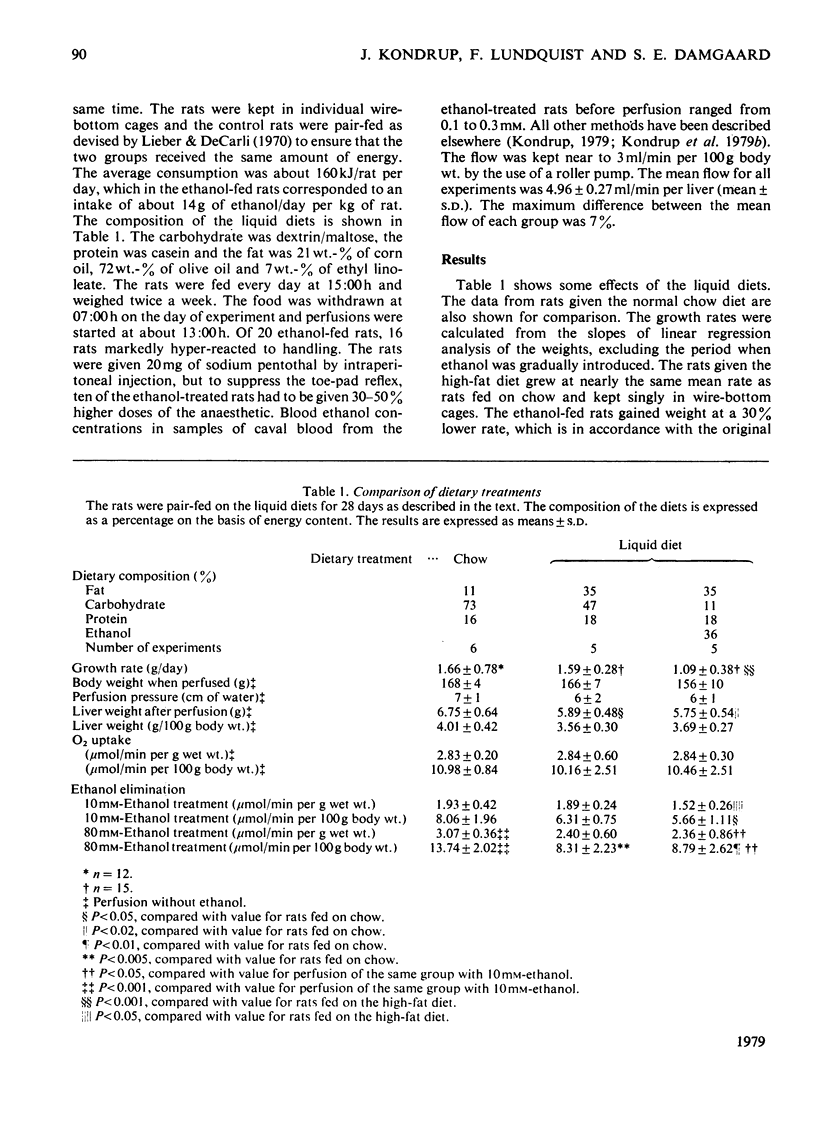
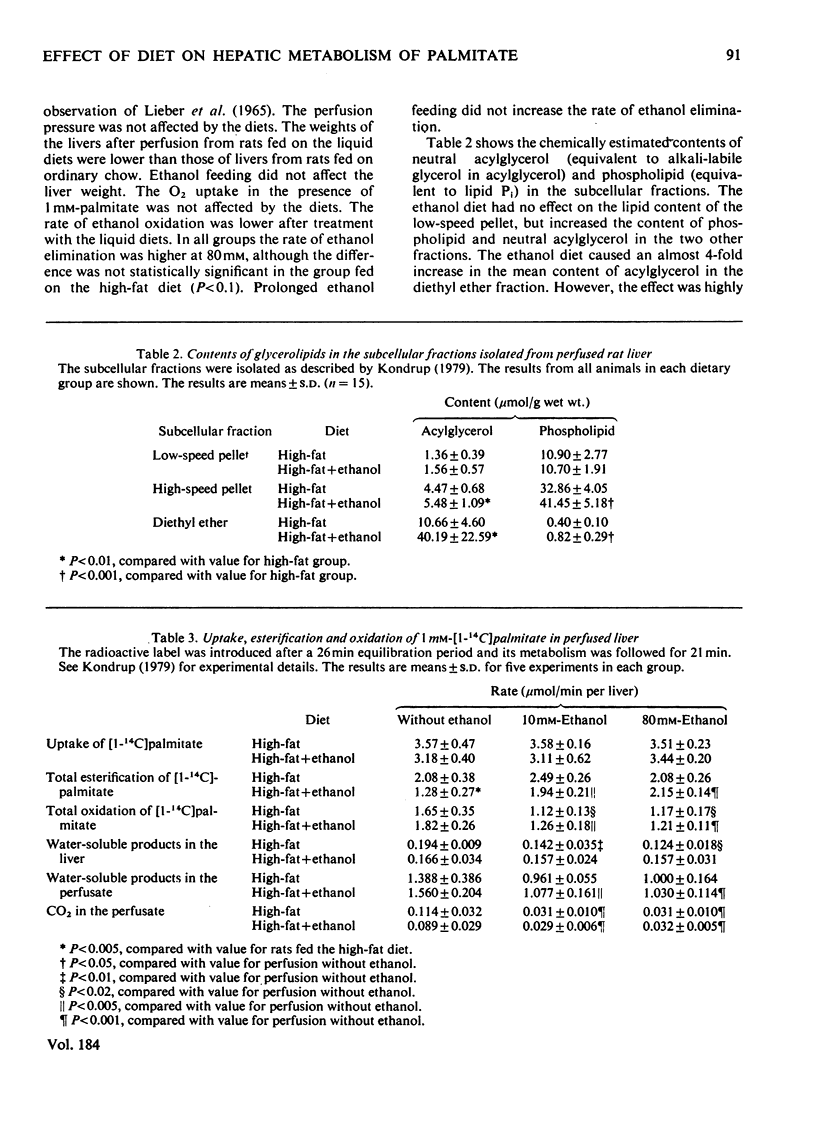
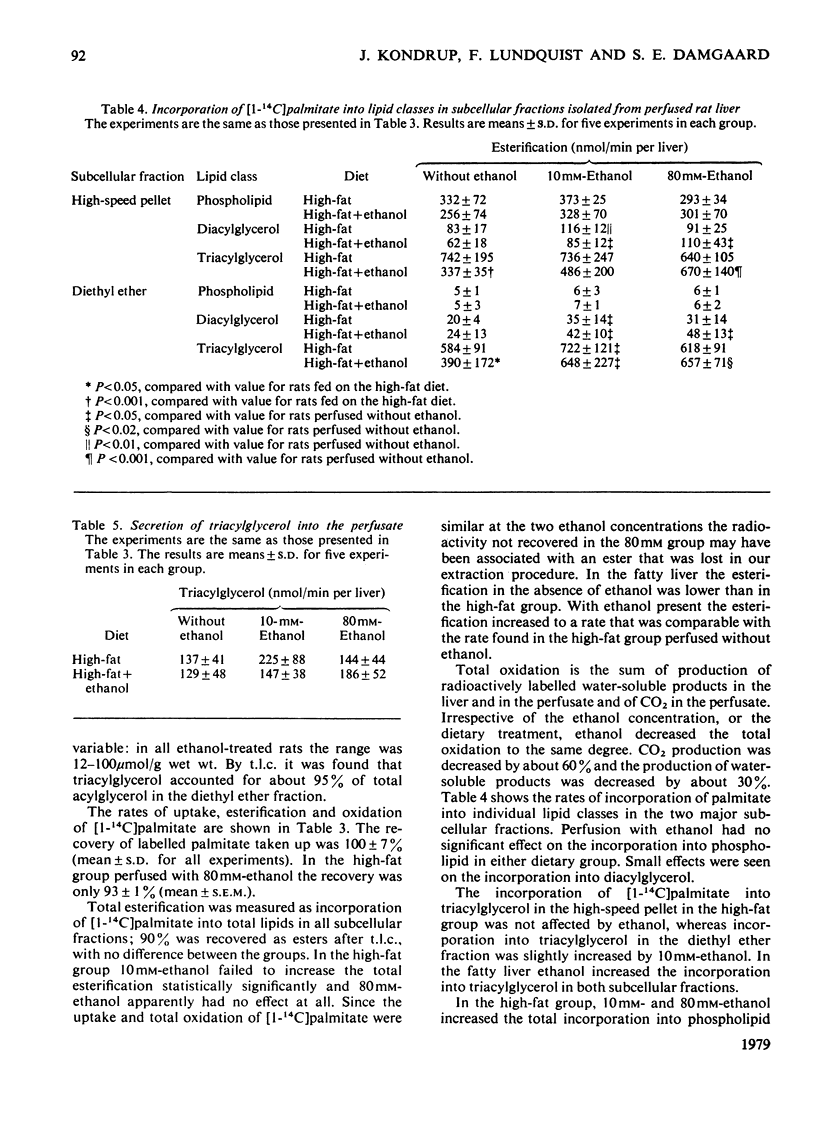
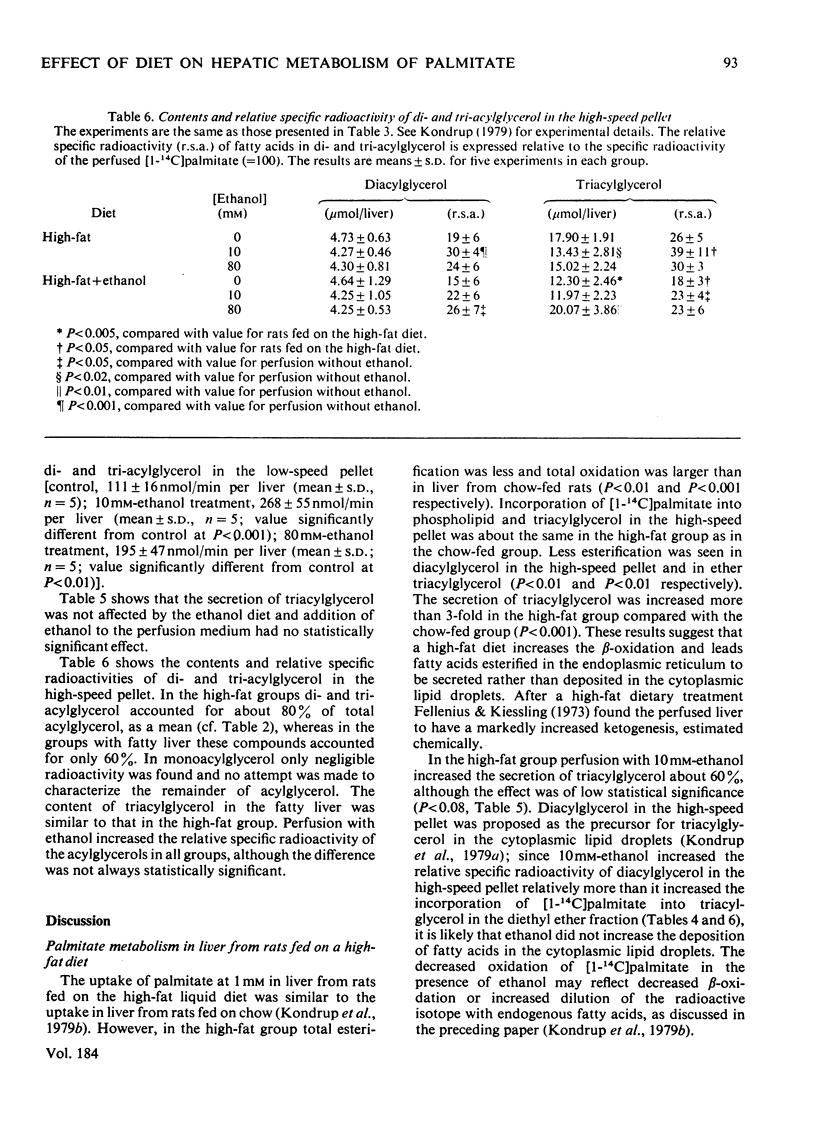
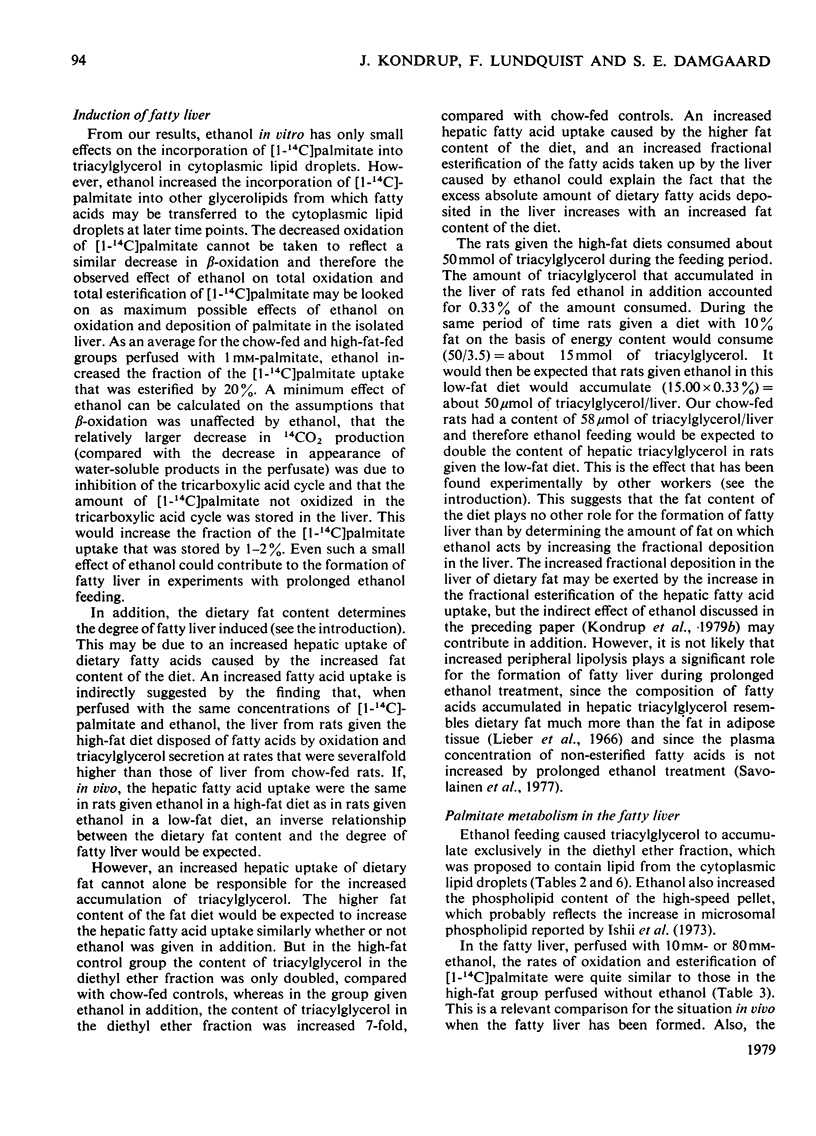
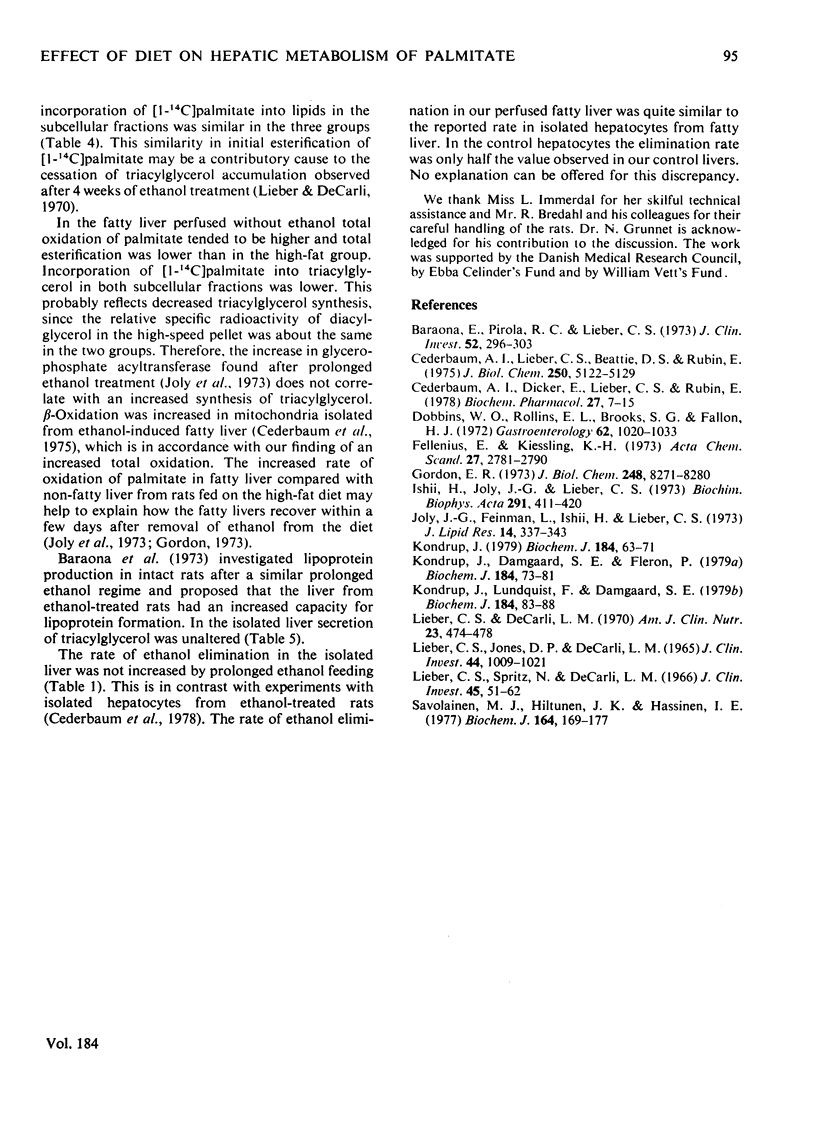
Selected References
These references are in PubMed. This may not be the complete list of references from this article.
- Baraona E., Pirola R. C., Lieber C. S. Pathogenesis of postprandial hyperlipemia in rats fed ethanol-containing diets. J Clin Invest. 1973 Feb;52(2):296–303. doi: 10.1172/JCI107185. [DOI] [PMC free article] [PubMed] [Google Scholar]
- Cederbaum A. I., Dicker E., Lieber C. S., Rubin E. Ethanol oxidation by isolated hepatocytes from ethanol-treated and control rats; factors contributing to the metabolic adaptation after chronic ethanol consumption. Biochem Pharmacol. 1978 Jan 1;27(1):7–15. doi: 10.1016/0006-2952(78)90250-2. [DOI] [PubMed] [Google Scholar]
- Cederbaum A. I., Lieber C. S., Beattie D. S., Rubin E. Effect of chronic ethanol ingestion on fatty acid oxidation by hepatic mitochondria. J Biol Chem. 1975 Jul 10;250(13):5122–5129. [PubMed] [Google Scholar]
- Dobbins W. O., 3rd, Rollins E. L., Brooks S. G., Fallon H. J. A quantitative morphological analysis of ethanol effect upon rat liver. Gastroenterology. 1972 May;62(5):1020–1033. [PubMed] [Google Scholar]
- Fellenius E., Kiessling K. H. Effect of ethanol on fatty acid oxidation in the perfused livers of starved, fed, and fat-fed rats. Acta Chem Scand. 1973;27(8):2781–2790. doi: 10.3891/acta.chem.scand.27-2781. [DOI] [PubMed] [Google Scholar]
- Gordon E. R. Mitochondrial functions in an ethanol-induced fatty liver. J Biol Chem. 1973 Dec 10;248(23):8271–8280. [PubMed] [Google Scholar]
- Ishii H., Jean-Gil, Lieber J., Lieber C. S. Effect of ethanol on the amount and enzyme activities of hepatic rough and smooth microsomal membranes. Biochim Biophys Acta. 1973 Jan 26;291(2):411–420. doi: 10.1016/0005-2736(73)90493-8. [DOI] [PubMed] [Google Scholar]
- Joly J. G., Feinman L., Ishii H., Lieber C. S. Effect of chronic ethanol feeding on hepatic microsomal glycerophosphate acyltransferase activity. J Lipid Res. 1973 May;14(3):337–343. [PubMed] [Google Scholar]
- Kondrup J., Damgaard S. E., Fleron P. Metabolism of palmitate in perfused rat liver. Computer models of subcellular triacylglycerol metabolism. Biochem J. 1979 Oct 15;184(1):73–81. doi: 10.1042/bj1840073. [DOI] [PMC free article] [PubMed] [Google Scholar]
- Kondrup J. Metabolism of palmitate in perfused rat liver. Isolation of subcellular fractions containing triacylglycerol. Biochem J. 1979 Oct 15;184(1):63–71. doi: 10.1042/bj1840063. [DOI] [PMC free article] [PubMed] [Google Scholar]
- LIEBER C. S., JONES D. P., DECARLI L. M. EFFECTS OF PROLONGED ETHANOL INTAKE: PRODUCTION OF FATTY LIVER DESPITE ADEQUATE DIETS. J Clin Invest. 1965 Jun;44:1009–1021. doi: 10.1172/JCI105200. [DOI] [PMC free article] [PubMed] [Google Scholar]
- Lieber C. S., DeCarli L. M. Quantitative relationship between amount of dietary fat and severity of alcoholic fatty liver. Am J Clin Nutr. 1970 Apr;23(4):474–478. doi: 10.1093/ajcn/23.4.474. [DOI] [PubMed] [Google Scholar]
- Lieber C. S., Spritz N., DeCarli L. M. Role of dietary, adipose, and endogenously synthesized fatty acids in the pathogenesis of the alcoholic fatty liver. J Clin Invest. 1966 Jan;45(1):51–62. doi: 10.1172/JCI105323. [DOI] [PMC free article] [PubMed] [Google Scholar]
- Savolainen M. J., Hiltunen J. K., Hassinen I. E. Effect of prolonged ethanol ingestion on hepatic lipogenesis and related enzyme activities. Biochem J. 1977 Apr 15;164(1):169–177. doi: 10.1042/bj1640169. [DOI] [PMC free article] [PubMed] [Google Scholar]


